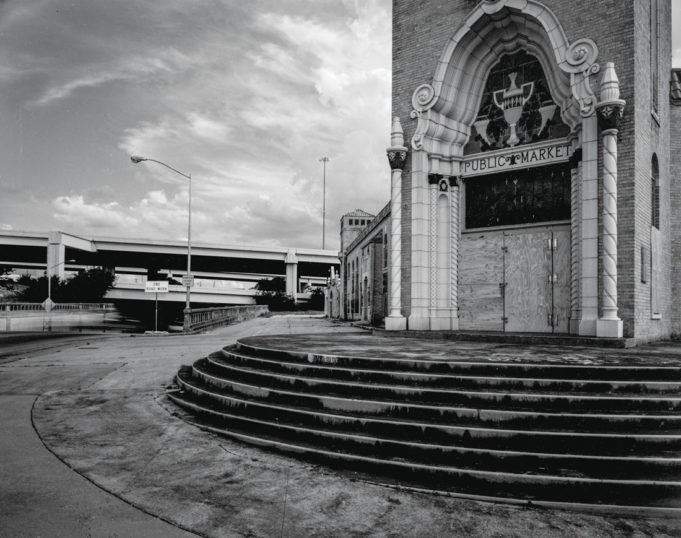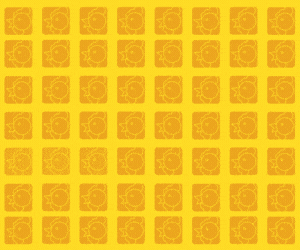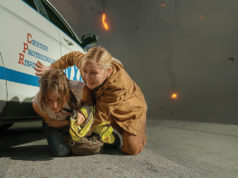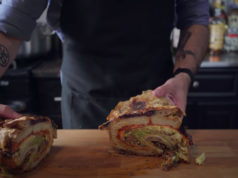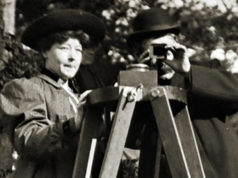Not too long ago, a professional wedding photographer walked into Don’s Used Photo Equipment, a hole-in-the-wall camera store in Dallas’ Design District, after having driven 40 miles from the other side of North Texas to buy 110 rolls of medium format film at eight bucks a pop. When digital cameras became the device of choice around 2003, many people thought that was the end of the film business — and it nearly was. But over the past couple of years, stores like Don’s, which cater to the film photographer, have seen a significant increase in film sales, especially from wedding photographers. People like the look of film. Digital is clean, more sanitary, but like the sound of analog tape and records, film has an aesthetic quality that’s not easily duplicated digitally. Well-to-do couples will pay a premium to have their weddings shot on film.
“The fun thing about that is that if people can afford to do weddings with film,” said Todd Puckett, whose father, Don Puckett, started the business 19 years ago, “they have a lot of location weddings where they bring the wedding photographer along to shoot the film. We’ve had photographers who got to travel to Cancun, the Bahamas, and Hawaii to shoot weddings in film. Starting August of 2015, our film sales skyrocketed. We wound up increasing 50 percent from 2014. We’re already ahead of purchases from 2015 in 2016.”
Although most other camera stores now carry a token selection of film, Don’s has carved out a niche in the North Texas photography market, carrying 30 varieties of film, including instant film and sheet film for large-format cameras (up to 8-by-10 inches). In the United States, Puckett’s little store is in the Top 25 percent of sales of film by Ilford Photo, a U.K. black-and-white manufacturer.
Several times a year Don’s and the Dallas Center for Photography, a photography school, join forces to put on a camera swap meet. DCP’s 6,000-square-foot facility is cleared out to make room for tables, and dealers come from all over the country to sell new and used equipment. While there is always some digital equipment for sale, the tables are overwhelmingly full of film cameras and darkroom gear. The swap meet has grown considerably in the past few years –– and the crowd is getting younger. Teens and twentysomethings are discovering film photography for the first time and buying up professional-grade equipment. Cameras that were once the domain of high-end photographers now go for a fraction of their original price. And many film photographers who made the switch to digital are rediscovering the artform.
Pete Rearden and Juston Goodall are fixtures in the Fort Worth music photography scene. Both of them now shoot more film than digital. Rearden, in fact, no longer even owns a digital camera.
“I shot film 20 years ago,” said Rearden, who has worked as both a photojournalist and a commercial photographer. “Then digital became the way to go. All your cost was up front. You didn’t have to pay for film. You didn’t have to pay for film developing. But that’s also what drove me away from digital photography. There’s a lot more satisfaction knowing that it’s going to cost this much every time you take a photo. You need to think. You need to be thoughtful about your photos. It’s far more rewarding than taking 500 shots digitally to get one good photo.”
Rearden mostly shoots large-format cameras now. Instead of a roll of film that gives you 36 photos, these cameras use a single sheet of film that’s 4 by 5 inches across. While finicky and expensive, the process produces a high-quality image, which has kept the format alive –– especially in architecture and landscape photography.
“When you have 4 inches by 5 inches of film space,” Rearden said, “you can get more detail than a digital can give you.”
Goodall shoots mostly medium-format roll film, in which each frame is about four times the size of the sensor in a full-frame professional digital camera. Once used mostly by high-end portrait and product photographers, medium-format film found new life with young hipsters, who fell in love with the distorted images produced by the cheap, plastic, Chinese-made medium-format cameras such as The Holga and The Diana, giving photogs like Goodall ready access to film for more traditional cameras.
Michael Bain, U.S. marketing and business development manager for Ilford, recently told a group of film buffs at Don’s that “if you see a hipster on the street with their plastic camera, go up and give them a hug.”
Goodall is glad film has come back around.
“Like drugs, my friends got me into it,” he said. “We were all doing digital, and then my friends got into the film stuff. I started looking at their work and remembering why I liked photography when I was younger. Just something about film gave it more of an ‘I’m there’ feel to it. Digital was so clean that it didn’t match what you think you see in reality. Film is like looking back at a memory. You see it a little fuzzy, see it a little off, but it still brings back more of a sense of what really happened.”
Both Rearden and Goodall primarily shoot in black and white. While there are practical reasons for the photogs’ decision, black-and-white film is easier and cheaper to develop at home, for instance. But for many photographers, it comes down to aesthetics.
“It’s got more atmosphere to it,” Goodall said. “Just the details you get with it that you just don’t ever see in color. You see color, and that’s mainly what you see. You see black and white, and it draws your eyes to details that you would just gloss over if you were looking at color. “
Many retailers, who at one point were losing money on film because it was expiring faster than they could sell it, have been reluctant get back on board with film.
Camera store salespeople will tell a customer that a particular film isn’t being made anymore, when really the store just doesn’t carry it. Ilford, which reorganized after filing for bankruptcy in 2004 as a manufacturer of only black-and-white film, paper, and chemicals, has never discontinued any film varieties.
In fact, Ilford has added new products. But that doesn’t stop the rumors.
“The hardest part of the film industry is not fighting the decline of film,” Puckett said, “but fighting the ignorance, the ‘film is gone’ mentality. Once people understand film is still around, it’s not going anywhere, and it’s actually increasing in availability. Every week we have someone come in and say, ‘I thought film is dead.’ I tell them, ‘It’s not dead. It just smells funny.’ ”
[box_info]Photo Swap Meet
10am-4pm Sat at the Dallas Center for Photography, 4756 Algiers, Dallas. $5.
214-630-4909.[/box_info]



